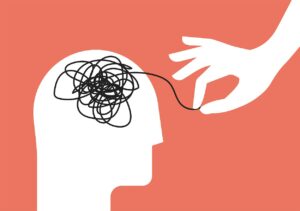OCD exposure therapy is a type of cognitive-behavioral therapy (CBT). It is often used to treat compulsive behavior. It involves exposing the person with OCD to the situations or objects that trigger their obsessive thoughts and compulsive behaviors. This is performed in a gradual, step-by-step manner. It allows the person to face their fears gradually and ultimately reduces their anxiety levels. In this blog post, we will discuss some common OCD exposure therapy examples.
Contents
What Is OCD Exposure Therapy?
OCD exposure therapy is a form of CBT that helps people confront their fears and reduce the intensity of their anxiety. It involves exposing the person to situations or objects that trigger their obsessive-compulsive symptoms, in a gradual and step-by-step approach. The goal of this type of therapy is to help the person learn how to cope with their anxiety and fear in a healthy way, instead of resorting to compulsive behaviors.
What Are The Types of OCD Exposure Therapy?

There are several different types of OCD exposure therapy.
- Imaginary Exposure: This type of therapy involves facing the feared stimulus in imagination, without actually experiencing it in person. It might involve repeatedly imagining a scenario until the fear associated with it is reduced.
- In Vivo Exposure: This type of therapy requires exposing oneself directly to the feared stimulus. It is sometimes referred to as ‘real life’ exposure.
- Virtual Reality Exposure: This type of therapy uses virtual reality technology to create a controlled environment in which the person can safely face their fears.
- Interoceptive Exposure: This type of therapy involves facing internal bodily sensations that are associated with anxiety or fear. It helps the person become more familiar with and less fearful of these sensations.
- Graded Exposure: This type of therapy uses a step-by-step approach to help the person gradually build up their tolerance for the fear or anxiety-producing stimulus.
These are some of the most common OCD exposure therapy types. Depending on the individual’s needs and preferences, a therapist may combine multiple types of exposure in order to achieve the best results.
What Are The OCD Exposure Therapy Examples?

There are many different examples of OCD exposure therapy that are helpful to treat compulsive behavior.
Touching objects
For example, if you have an obsession with germs or “contamination”, your therapist may ask you to touch everyday items. This includes such as doorknobs and coins that you fear can cause contamination. Your therapist may then work with you to decrease your anxious reactions. It will ultimately increase your tolerance for touching those objects.
Habituation
Another example of OCD exposure therapy is habituation. This type of therapy involves facing the feared stimulus and allowing yourself to become habituated to it, This leads to the fear and anxiety associated with it eventually decreasing. For example, if you are scared of dogs, your therapist may have you practice standing in an area where a dog is nearby until the fear subsides.
Magical Thinking
One more example of OCD exposure therapy is magical thinking. This involves challenging the thoughts that feed into your compulsive behaviors. It includes just believing that something bad will happen if you don’t perform a certain ritual or complete a certain task. Your therapist may help you to identify these irrational beliefs and work with you to challenge them by providing evidence that disproves them.
Systematic Desensitization
This type of therapy uses relaxation techniques in combination with imaginal and/or real-life exposures. Its purpose is to reduce fear and anxiety toward a certain situation or object. For example, if you are scared of public speaking, your therapist may help you to gradually become more comfortable speaking in front of an audience. By starting with a small group and gradually increasing the size.
Extinction
This type of therapy involves gradually reducing the compulsive behaviors that are associated with OCD. For example, if you have a compulsion to repeatedly check locks or windows before leaving your home, your therapist may help you to reduce this behavior by having you challenge the thoughts and beliefs behind it. This might involve slowly reducing the number of times you perform the behavior until it eventually stops.
Thought Stopping
Thought-stopping is another type of OCD exposure therapy. This involves recognizing when obsessive thoughts or compulsive behaviors start to take place and then actively trying to stop them. For example, if you notice yourself having intrusive thoughts about washing your hands repeatedly, you can use thought-stopping techniques. For instance, saying “stop” aloud or writing down the thought on a piece of paper and then throwing it away.
These are just some of the examples of OCD exposure therapy that are available. It is important to note that these techniques should only be used under the guidance of a trained professional. They can help you manage and reduce your symptoms in a safe, effective way. Ultimately, exposure therapy can be an invaluable tool in managing OCD symptoms and improving quality of life.
How Successful Is Exposure Therapy With OCD?

Exposure therapy is an effective tool in reducing OCD symptoms. Studies have found that exposure and response prevention (ERP) is the most effective treatment for OCD. Many people experience marked improvements in their symptoms after just 10-12 weeks of treatment.
It is important to note, however, that success rates may vary from person to person and it is always best to consult a mental health professional before starting any type of treatment program.
Conclusion
OCD exposure therapy is a type of cognitive-behavioral therapy that involves facing and treating the fears, thoughts, and behaviors associated with obsessive-compulsive disorder. There are many different types of OCD exposure therapy such as virtual reality exposure, interoceptive exposure, graded exposure, habituation, magical thinking, systematic desensitization, extinction, and thought stopping. With the help of a qualified mental health professional, these techniques can help individuals with OCD manage their symptoms and lead healthier lives.
For more information and guidance, please contact MantraCare. OCD is a mental health disorder characterized by obsessions and compulsions. If you have any queries regarding Online OCD Counseling experienced therapists at MantraCare can help: Book a trial OCD therapy session


